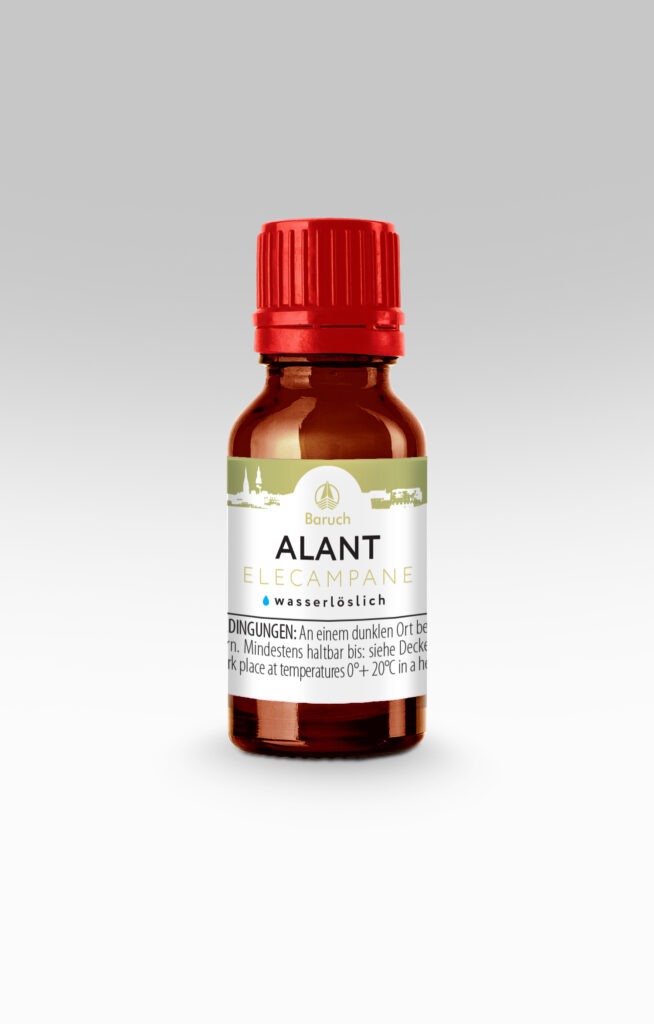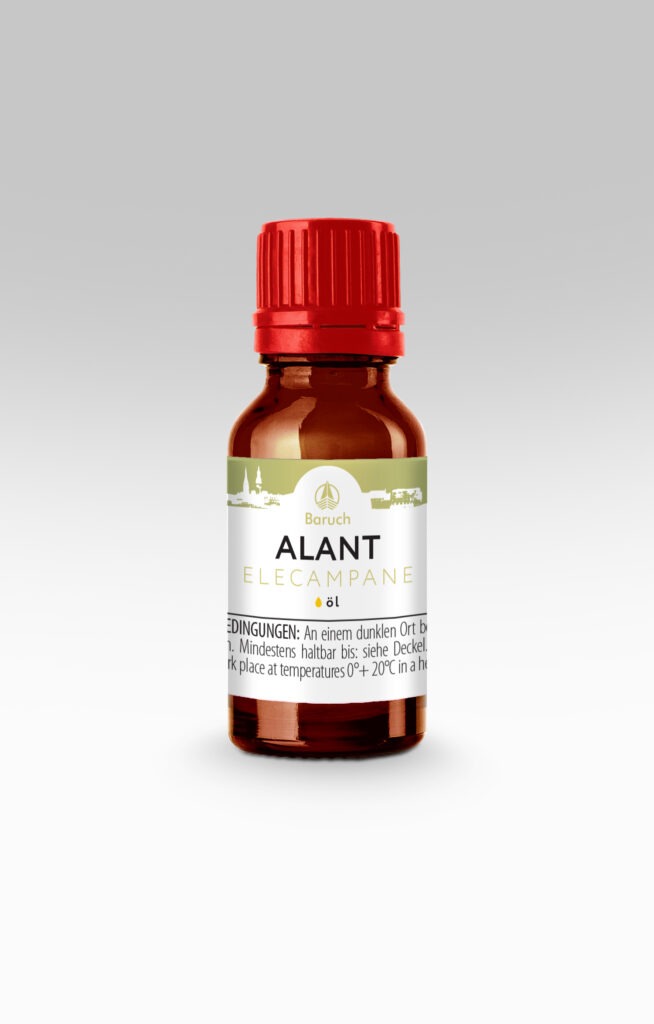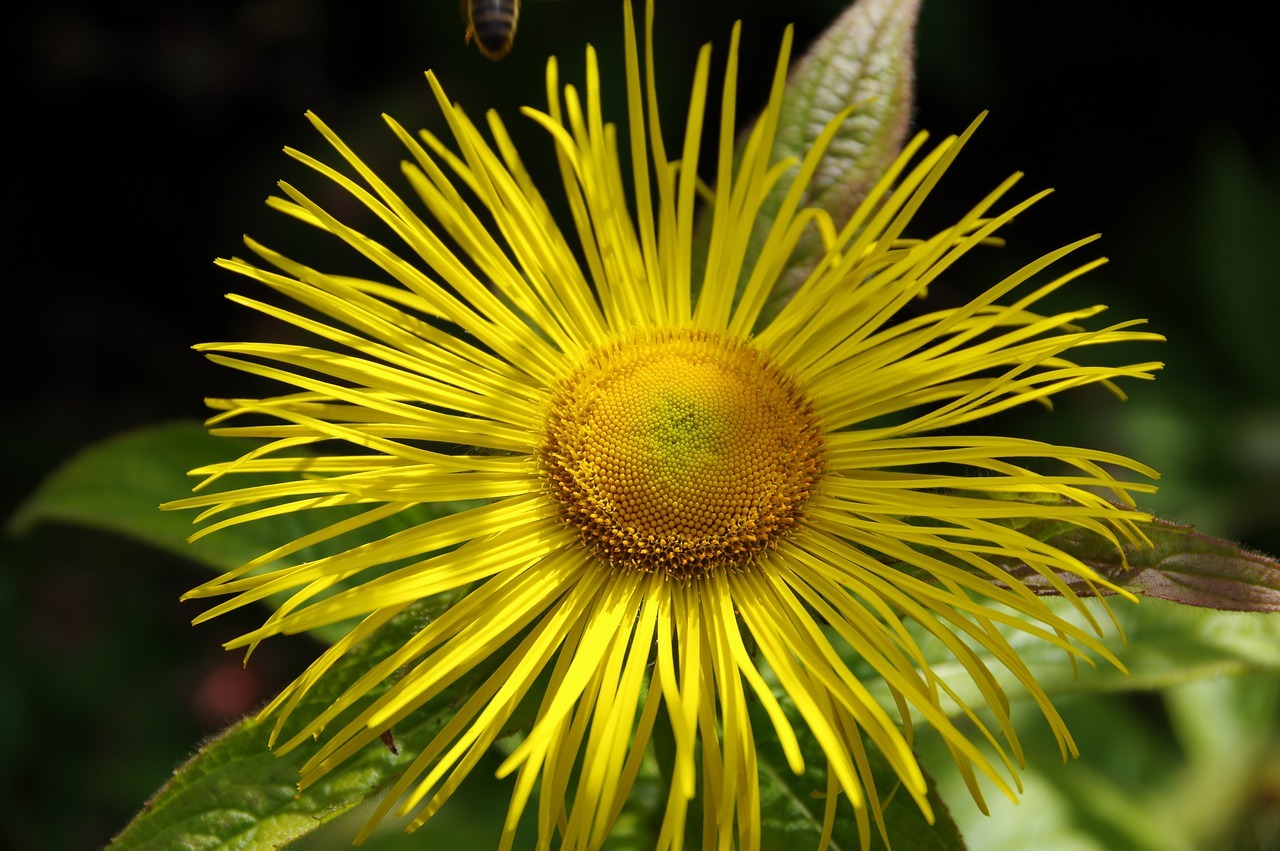To obtain the CO2 extract from elecampane, the roots of the elecampane plant are used.
Traditionally, in addition to hydrophilic compounds, especially the polysaccharide inulin, oil, which is an essential oil, was also extracted from elecampane root. Like this oil, CO2 extract from elecampane promotes rapid cleansing of the body, has anti-inflammatory, antiseptic, antispasmodic, healing, astringent, bactericidal, diaphoretic, diuretic, expectorant, fungicidal and antihypertensive effects. In folk medicine, oil infusions of elecampane and therefore its CO2 extracts with the same properties are used to treat bronchitis, it has expectorant properties and has a positive effect in the treatment of chronic cough in smokers, as well as chronic and asthmatic bronchitis and pulmonary emphysema. It is used for diseases of the gallbladder, liver, kidneys and bladder. It has an analgesic effect in joint diseases – arthritis, rheumatism and inflammation of the sciatic nerve. In addition, elecampane is even used in cancer therapy. Caution should be exercised when using the CO2 extract in high concentrations as, although it is completely non-toxic, it can cause severe allergic reactions.
Elecampane CO2 extract can be considered a spice that can replace ginger and mint. CO2 extract can be used in the preparation of canned fish, marinades and sauces, as well as in the production of confectionery, sweets and baked goods. The CO2 extract from elecampane is also used as a flavoring agent in the production of alcoholic beverages, beer and soft drinks.
Biozevtika CO2 extract from elecampane is a brown or yellowish-brown substance that hardens at room temperature and changes to the liquid phase at 360 °C and has a gentle woody aroma.
Main components of Elecampane CO2 extract
| NAME | CONTENT IN % OF TOTAL VOLATILE COMPONENTS | FUNCTION |
| Alantolactone | 27,9 | Anthelmintic, antiseptic, diuretic, expectorant, antitumor, bactericidal, antihypertensive, hypoglycemic |
| Isolactone | 24,3 | Anthelmintic, antiseptic, diuretic, expectorant, antitumor, bactericidal, antihypertensive, hypoglycemic |
| Dihydroisoalantholactone | 4,7 | Anthelmintic, antiseptic, diuretic, expectorant, antitumor, bactericidal, antihypertensive, hypoglycemic |
| Dihydroalantolactone | 3,9 | Anthelmintic, antiseptic, diuretic, expectorant, antitumor, bactericidal, antihypertensive, hypoglycemic |
| Azulene | 1,3 | Anti-inflammatory, antipyretic |
| Beta-Carotene (Provitamin A) | 1,0 | Supplies the body with vitamin A. Active antioxidant, counteracts the formation of cancer cells. Has a positive effect on vision and supports healthy skin and mucous membranes |
| Spathulenol | 8,8 | fungicide |
| Farnesol | 7,9 | Deodorant, bacteriostatic, tonic |
| Ledol | 5,4 | expectorant, antispasmodic, bactericidal |
In cosmetology, elecampane extract is used in the following preparations:
– Lotions that moisturize the skin and give it elasticity and firmness
– Anti-itch creams with anti-inflammatory effects
– Products to cleanse the skin of natural impurities and make-up residue
– Creams against skin flaking
– Hair masks with strengthening effects
– Hair conditioners with anti-dandruff properties
Judging from the information received, Hippocrates constantly used elecampane to treat ulcers, eczema and itching and in one of his “satires” Horace mentions the use of elecampane in the preparation of sauce.
In nature, elecampane occurs throughout Europe, Asia, southern Siberia and northern India. In the USA and Canada it is grown as a raw material for pharmacology.


